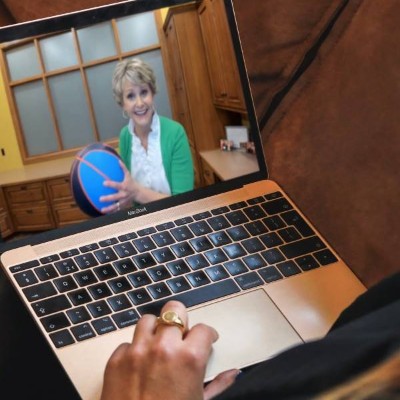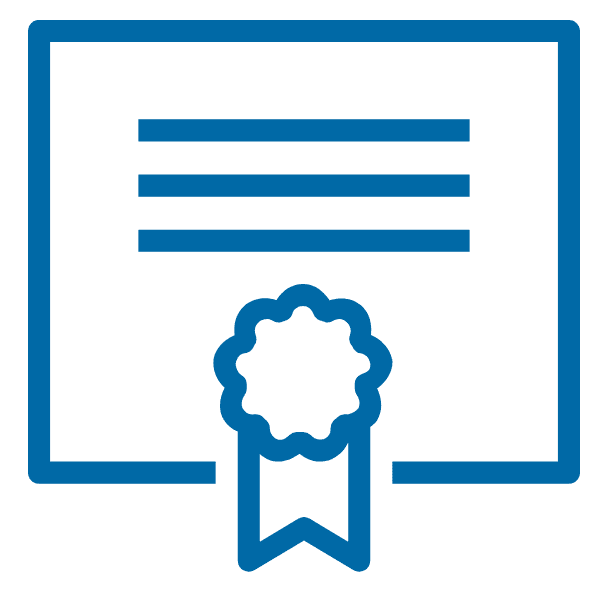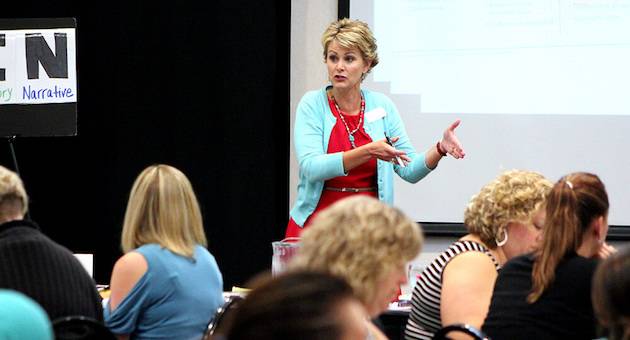How to build a professional development plan for teachers
Learn a 4-step framework for building a professional development plan that fosters better teaching and ultimately improved student achievement.
by Michelle Schweikhardt
To be successful in today’s classroom, educators need to be committed to the idea of being lifelong learners. In fact, staying up to date on the latest educational trends and best practices is essential to providing students with the best possible education.
That is where a professional development plan comes in. A professional development plan is a road map for professional growth. Educators achieve personalized goals by setting specific objectives, identifying resources, and tracking progress through professional development plans.

A professional development plan can help new and experienced teachers pursue lifelong learning while staying ahead of the curve. However, crafting an individual professional development plan for teachers of all stripes can seem like a daunting task. With so many priorities on the typical teacher’s radar, it’s hard to know where to start.
This guide provides a 4-step framework for building a professional development plan that fosters better teaching and ultimately improved student achievement.
Step 1: Assess current skills and areas for growth
Teachers can achieve this through a variety of methods: self-assessment, feedback from colleagues, or formal evaluations.
Self-assessment
One method of evaluating skills is a self-assessment. This can help teachers identify their strengths and reveal areas of improvement. Six questions teachers can ask to guide their professional development plan include:
-
-
- What do I want to achieve this school year?
- What are my strengths? Weaknesses?
- What do I want my students to achieve?
- What do I want to learn more about?
- What are the needs of my students?
- In what ways do I need to better align my professional development with any district initiatives?
-
Feedback from colleagues
Asking colleagues for feedback on teaching practices, or participating in classroom observations, can provide a less intimidating approach to help teachers gain insight into their effectiveness and teaching styles.
Formal evaluations
Performance reviews or evaluations conducted by an administrator or coach can provide valuable feedback on effectiveness as well as identify areas of improvement based on set standards and guidelines.

FREE ON-DEMAND WEBINAR
Advance Beyond Doing Reading to Teaching Reading
Learn what explicit, whole-class comprehension instruction looks like and how to effectively scaffold mini-lessons within the rest of the reading block to honor the gradual release of responsibility.

Earn a completion certificate
60-minute webinar
Step 2: Set SMART goals for professional development
Once teachers have assessed their skills and identified areas for growth, the next step is to set SMART goals for professional development.
SMART goals are:
- Specific–What do you want to achieve?
- Measurable–How will you know when you’ve achieved your goal?
- Achievable–Is your goal realistic and within your reach?
- Relevant–What makes this goal appropriate for you/your students?
- Time-bound–When do you want to achieve this goal?
Each goal should be clear, quantifiable, realistic, aligned with overall objectives, and have a specific deadline for completion.
How does a SMART goal compare to a typical goal? Rather than setting a goal to “improve my teaching skills,” a teacher could set a SMART goal like: “I will intentionally plan and deliver 4-step mini-lessons during whole-class comprehension instruction in order to demonstrate 80% mastery of this best practice by the end of the school year.”
This professional development plan for teachers example contains a SMART goal that is specific to a teaching practice and content area—delivering dynamic mini-lessons in reading comprehension.
It references a benchmark of 80% mastery that is measurable by assessing the number of times it was documented in teacher lesson plans.
Although the rationale for making a SMART goal achievable and relevant may not be explicitly stated in the goal, it is important to take it into account. In this example, the goal is achievable because it doesn’t require 100% implementation and relevant because it is associated with global best practices.
This SMART goal is time-bound because it focuses on a teaching practice that, with ample time for practice, makes it achievable by the end of each quarter.
Setting SMART goals establishes a clear course for a teacher professional development plan, enabling teachers to align each component of the plan with their overall objectives.
Step 3: Create a plan to implement the goal
Once teachers have set a SMART goal, they can create a road map to outline the actionable steps that will help them achieve the goal. Teachers may question what essential features to include in a PD plan. A comprehensive plan includes:
Active learning
Active learning requires teachers to participate in the learning process. When selecting activities for a professional development plan, teachers benefit from engaging in similar experiences to those in the classroom. This can include attending workshops, conferences, and in-person or online courses.
Effective practices
Educators can improve by continually learning effective practices that are rooted in research. Teachers can start by identifying best practices that are directly related to the SMART goal objective. This may include learning more about strategies for instructional planning, student engagement, gradual release of responsibility, learning styles, or differentiation.
Resources
If teachers don’t have the right resources, achieving the goal could be much harder or even impossible. Teachers need to identify the tools they need to meet the goal. This could include a variety of sources, from people to books to online resources.
Collaboration
Collaboration is an essential part of an effective individual professional development plan for teachers. By collaborating with other educators, teachers can build upon previous understandings, gain clarity, solve problems, and plan for the implementation of new initiatives.
Methods of collaboration may include 1:1 coaching, grade-level team meetings, professional learning communities, and more.
When utilizing third-party offerings such as Smekens Education’s Remote Coach service, educators can collaborate about previously-learned strategies and focus on the specific facets of implementing them with success.
Data, reflection, & feedback
Data can guide reflection and feedback while helping to determine future professional development needs. By looking at both qualitative and quantitative student data, educators can identify patterns, trends, and outliers as they apply what they have learned from professional workshops, reading, collaboration, etc.
Plan with a template
A professional development plan template for teachers organizes each of these components and creates a visual road map that can be referred to throughout the year. To make the plan more productive, a time line with dates and benchmarks should also be included. This helps teachers stay on track with their professional development goals and ensures that they are making progress.
Whether creating a template from scratch or using a pre-established professional development planning template, evaluate the template and ensure that it covers the essential steps to create a tailored and focused teacher professional development plan.
Once the road map has been created, it is essential to put it into action. This involves proactively scheduling time for professional development activities such as workshops and conferences, in-person or online courses, webinars, and book studies.
It’s important to be proactive and take ownership of professional development. Follow through on commitments—but be flexible and adjust plans based on progress or changing needs.
Step 4: Measure the success of the teacher professional development plan
For example, with the sample SMART goal provided, a benchmark could be to increase the planning and implementation of the 4-step mini-lesson in reading by 10% each quarter. To track progress, collect data from how many lesson plans were crafted using the 4-step mini-lesson and evaluate the impact of the professional development activities on your capacity to deliver dynamic mini-lessons effectively.
By measuring the success of the professional development plan, educators can identify areas of improvement and adjust the plan accordingly.
Stay motivated and accountable
Staying motivated and accountable is essential for achieving professional development goals. Once the SMART goal is set, follow these four simple tips to stay on track:
-
- Be realistic: Make sure your goals are achievable and aligned with overall objectives.
- Stay organized: Keep track of professional development activities and deadlines using a planner or calendar.
- Find a support system: Work with colleagues or a mentor to stay motivated and accountable.
- Celebrate successes: Take time to acknowledge achievements and celebrate progress.
Ongoing professional development is essential for teachers who want to stay current, improve their teaching skills, and provide the best possible learning experience for their students. In addition, teachers earn continuing education credit for most professional development experiences. Most states require a minimum number of continuing education credits for licensure renewal.
By developing a professional development plan tailored to specific needs, setting SMART goals, and creating a road map for implementation, teachers can take their careers to the next level and unlock their full potential as an educator.
Resources to help you succeed—from Smekens Education
Set up your professional development plan, then check out how Smekens Education can support your success.
Professional Development Services
TEACHER TRAINING

CUSTOMIZED CONSULTING

BOOKS & RESOURCES





